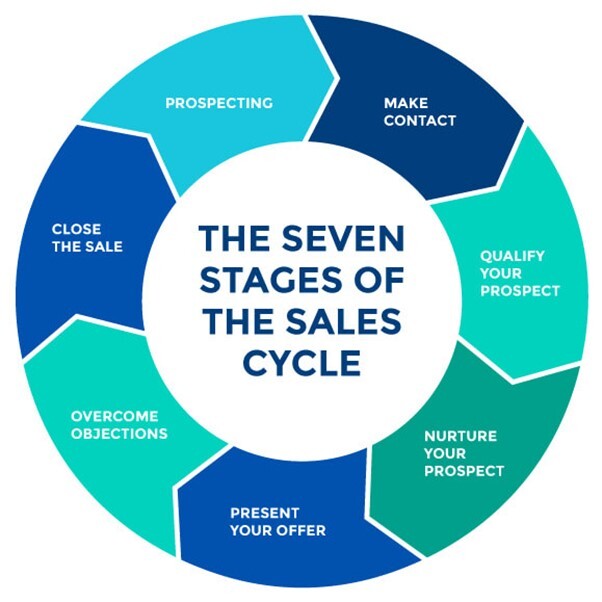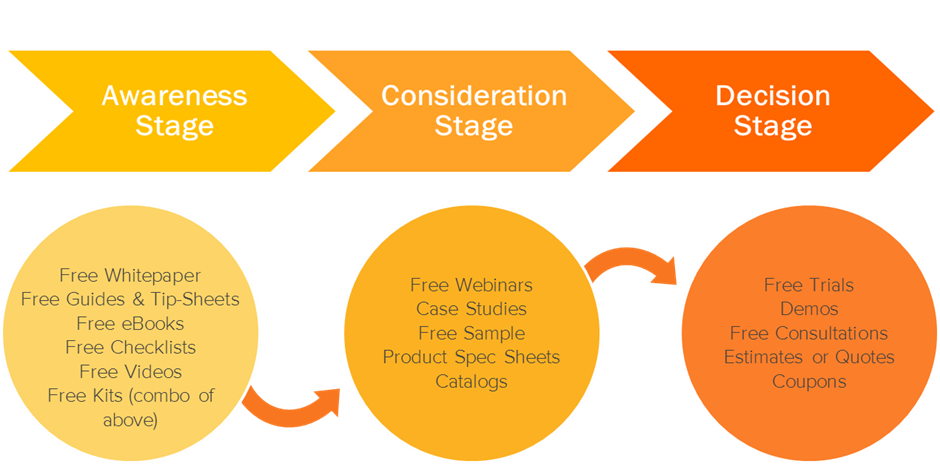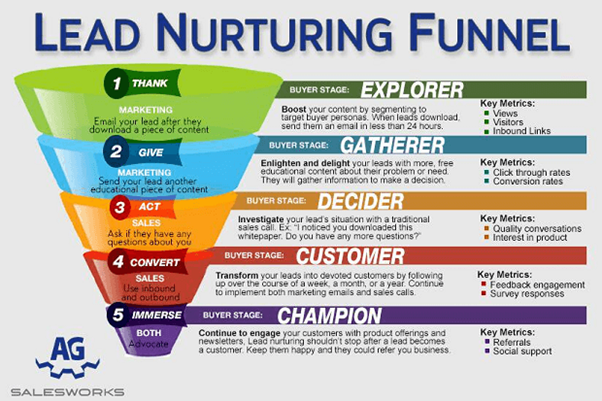B2B lead nurturing is an essential part of the marketing process for businesses. Through a series of targeted campaigns, it helps to create relationships with potential prospects and increase the likelihood of them becoming actual clients. Lead nurturing techniques, including personalization, segmentation, and automated emails, are all used to ensure that the right message is sent to the right person at the right time. In addition, many businesses also use lead nurturing techniques such as content marketing and social media to engage with their leads and keep them engaged throughout the sales process.
When used effectively, B2B lead nurturing can be a powerful tool to help convert leads into clients and can be a significant factor in the success of any business. The sales cycle for nurtured leads is 23% shorter. Companies with lead nurturing expertise generate 50% more sales-ready leads at a 33% lower cost.
In this blog post, we will explore the concept of B2B lead nurturing and discuss what it entails, its importance in the B2B sales process, and how to go about implementing it. We'll also discuss the benefits of effective lead nurturing and how it can help your business stay ahead of the competition.
What is Lead Nurturing?
Business-to-business (B2B) lead nurturing is the process of engaging prospects that have expressed interest in your product or service. Lead nurturing is an effective way to qualify leads, establish relationships, and move leads closer to a buying decision. It can help you build relationships with leads, understand their needs and pain points, and provide relevant content to help them move through the sales funnel. Lead nurturing can also help you identify leads that are most likely to convert and prioritize those leads in your sales and marketing efforts. You can develop automatic lead nurturing campaigns using the HubSpot lead nurturing feature, which makes educating and nurturing your leads seamless.
B2B lead nurturing is essential to a successful sales and marketing strategy. By engaging potential clients through relevant, personalized content and messages, your salespeople can build trust with leads, understand their needs, and move them closer to buying.

Why is Lead Nurturing Important?
Lead nurturing is key to any successful B2B lead generation strategy. A few high-level benefits of lead nurturing include:
• Targeted approach: Lead nurturing is a great way to create a more targeted approach to lead generation. This technique gives you an edge over your competitors.
• Improve brand image: Lead nurturing assists in keeping your brand at the top of the minds of your clients and prospects.
• Build Trust: Lead nurturing helps you to build credibility and trust with leads, and it can help you to nurture leads through the sales funnel and convert more.
• Build Relationship: Overall, lead nurturing is an excellent method for developing relationships and connections with potential clients, establishing credibility and trust.
Taking Care of Your Leads Promotes Your Value
Lead nurturing is an effective way to build relationships and establish trust with prospects over the long term. It’s a powerful tool for B2B marketers that can help turn prospects into clients and increase sales.

• By providing timely, relevant content to prospects, you can establish yourself as a consultant and build a stronger relationship with them over time
• Lead nurturing can help you build buyer personas, identify qualified leads, prioritize them, and provide helpful consultation that will influence decisions.
• Effective lead nurturing requires an understanding of the client's needs and an ability to provide valuable insights and solutions that will help them move through the sales funnel. It can also help you customize your content for each prospect, increasing engagement and conversion rates.
• Through lead nurturing, you can demonstrate your value as a company and increase the likelihood that prospects will choose your product or service.
Your KPIs are boosted by sales nurturing
Lead nurturing can also help businesses exceed their KPIs and track the success of their campaigns. To see how many leads you have at each level of your sales funnel, you should track these leads through KPIs in your lead nurturing software.
• The percentage of leads generated through lead generation nurture campaigns each month will help you quickly visualize the ROI between sales and marketing.
• You can get similar information about content attractiveness, including text language, text kinds, graphic appeal, and more, by measuring this through Click-through rates for emails (CTR). If you keep track of the conversions of leads into opportunities, you can determine the type of content your leads respond to best. So whether you are gathering information about them through a form or another piece of material, you can determine the effect.
• If the readers unsubscribe from your email, it will enable you to determine whether the volume of messages sent during your lead nurturing program is relevant to your audience. Therefore knowing the rate of unsubscribed emails plays an essential role in defining the campaign KPI.
• Measuring this percentage of conversion rates for campaigns will also assist you in determining the ROI of your lead nurturing programs and marketing automation system. You will be able to determine which marketing campaigns are most effective for your company and how to capitalize on them in the future.
In conclusion, B2B lead nurturing is an invaluable tool that can help businesses maximize the lifetime value of their clients, increase their loyalty and retention, and optimize their sales process.
Nurturing Increases Your Brand Awareness
B2B organizations looking to maximize their leads and convert them into clients should take advantage of lead nurturing and its powerful benefits. Nurturing leads increases their chance of becoming clients, as it builds trust and brand recognition.
• By keeping in touch with leads regularly through email, social media, and other channels strengthen the relationship between a business and its leads. This allows for better engagement and relationship-building, making them more likely to remember your brand when buying.
• By providing helpful content, answering questions, and engaging with leads can make them feel more connected to your brand and increase their chances of recommending you to others. Furthermore, nurturing leads can help to drive more traffic to your website. You can boost your visibility and increase your brand’s reach by sending out quality content and engaging with your leads.
• Ultimately, regularly engaging with leads through nurturing tactics helps to keep your brand top of mind, increasing your chances of achieving conversions. B2B organizations looking to maximize their leads and convert them into clients should take advantage of lead nurturing and its powerful benefits.
The Sales Funnel: MQLs, SQLs, HQLs
The sales process includes the essential step of nurturing B2B leads. You can improve your chances of succeeding more quickly than your competitors by categorizing your leads into MQLs, SQLs, and HQLs, understanding their requirements, and developing tailored strategies for each stage of the sales funnel.

Categorizing your leads is essential to ensure that leads receive the right nurture program. This can be done by segmenting leads by buyer personas having industry, job title, or any other criteria that will help you identify the best leads for your product or service.
Lead categorization is essential to any lead nurturing plan, as it allows you to customize the content you share with leads and develop personalized lead nurturing plans. Lead categorization automation can help you save time and ensure that leads are properly segmented. Using automation, you can save resources and ensure that leads are properly nurtured and receive relevant content tailored to their needs.
When implemented correctly, lead categorization can help you better understand your target audience and their needs and identify the best-fit leads that are most likely to convert. Furthermore, it can help you create targeted campaigns to reach the right prospects at the right time. Additionally, categorizing leads by buyer personas and their level of interest in your product or service can help you prioritize your time and resources to focus on the most qualified leads.
Marketing Qualified Leads
Business-to-business (B2B) lead nurturing is essential to the sales process. By understanding the needs and interests of marketing qualified leads (MQLs), you can create tailored strategies to move them through the sales funnel quickly. Lead nurturing activities for Marketing qualified leads to include personalized emails, webinars, case studies, whitepapers, and product demos.
In addition to providing MQLs with the relevant information they need to make an informed buying decision, you can establish trust and credibility through consistent and personalized discussions and increase the likelihood of closing a sale.
Lead nurturing for MQLs should be done in an engaging and informative way. You can ensure that they receive the most relevant information by segmenting MQLs and tailoring lead generation strategies such as content and offers to their specific needs. This helps to build relationships, increase engagement, and move potential clients through the sales funnel.
Sales Qualified Leads
Leads are the lifeblood of any business, and B2B companies are no exception. Sales Qualified Leads (SQLs) are leads that have been identified through a qualification process and deemed ready to speak with a salesperson. Lead scoring is used to identify leads with the highest potential to convert into clients. By providing sales professionals with qualified leads, they can focus on prospects who are more likely to make a deal, resulting in higher close rates and shorter sales cycles.
B2B lead nurturing is essential for converting SQLs into clients. This involves providing targeted content to leads to keep them engaged and informed throughout the sales process. Marketers can increase conversion rates and strengthen client loyalty by creating personalized experiences for leads and addressing their needs. Marketers need to track and measure important metrics such as lead conversion rate and client lifetime value to ensure that leads are qualified.
Highly Qualified Leads
B2B Lead Nurturing is a powerful tool for sales teams to increase their qualified lead pipeline. Highly Qualified Leads (HQLs) is a lead that satisfies the service level agreement (SLA) between marketing and sales. This lead meets the criteria of the buyer's persona and has shown interest in finding out more about your business and offers. HQLs are the most valuable leads and are the most likely to convert. However, the top marketing challenge for 37.1% of businesses is generating high-quality leads.
Your salespeople should focus on nurturing these leads, representing the most significant potential for long-term success. HQLs have been identified as having a higher probability of becoming clients, as they have already expressed an active interest in the product or service. Lead nurturing campaigns can develop relationships with SQLs and HQLs, helping to build trust and encourage them to move further down the sales funnel.
Best Practices for Effective Lead Nurturing
B2B lead nurturing is a strategy used to increase the effectiveness of marketing campaigns by providing targeted, relevant content to leads that have expressed interest in a product or service. This content should be tailored to the lead’s stage in the buyer’s journey so that each lead receives the most applicable information. Effective lead nurturing also requires frequent and consistent communication, both online and off, to ensure leads stay engaged and don’t become disengaged. Lastly, it’s crucial to measure the lead engagement and take corrective action to ensure leads are moving down the funnel. Following these best practices will help to ensure a successful lead nurturing program.
1. Understand Your Audience and their pain-points
To maximize the effectiveness of lead nurturing, it’s essential to develop segmentation strategies to target the right leads with the right messages. A key component of successful lead nurturing is personalizing messages to make them more relevant.
Lead nurturing is an essential part of any successful B2B marketing strategy. It involves engaging with potential clients and building relationships to turn them into loyal clients. To do this effectively, it’s essential to understand who you’re talking to and their needs, wants, and interests. Once you understand your audience, you can craft your messages to appeal to their interests.
Engaging in conversations is also vital. Ask your clients questions to understand them better and address their pain points. Be authentic and genuine in your interactions, and be consistent, reliable, and transparent in your communications. Building trust with your clients is essential and will help you to turn them into loyal clients. By taking the time to understand your audience and engaging with them in meaningful ways, you can help to nurture leads and turn them into loyal clients.
2. Go for Multichannel Outreach
Automation of lead nurturing campaigns can nurture leads that haven’t yet converted. Consider using email, social media, and webinars to reach leads on multiple channels. It’s also essential to track and analyze data to ensure your lead nurturing efforts are practical. By leveraging multiple channels, you can target prospects more effectively and increase the chances of engaging them.
With multichannel outreach, you can send targeted messages to different segments of your target audience, increasing your chances of success. You can also track and measure results to determine which channels produce the best results. This allows you to focus your efforts on the most valuable channels.
Multichannel outreach is an incredibly powerful tool for B2B lead nurturing. By leveraging multiple channels and tailoring messages to different segments of your target audience, you can shorten the sales cycles and increase the chances of engaging prospects and nurturing leads over time.
3. Make use of Lead Scoring
Monitoring the entire client journey can help you better understand where leads drop out and why. A/B testing can be used to determine which lead nurturing messages are most successful.
Lead scoring is a key element of any lead nurturing program. Lead scoring allows you to prioritize leads that are more likely to convert by assigning them a score based on their fit for your product, engagement with your content, and other criteria you set. This helps you create more efficient sales processes by automatically identifying which leads are most likely to convert and should be passed on to sales.
Lead scoring is an effective tool that can help you streamline your lead nurturing process and ensure that your sales team focuses on the right leads. By using lead scoring to prioritize leads, you’ll be able to create more efficient sales processes and deliver more personalized experiences to your prospects, resulting in higher conversion rates.
4. Make use of Interactive Content
Interactive content can be a powerful tool to help capture leads’ attention and engage them further down the funnel. Interactive content such as quizzes, calculators, and assessments can help capture leads’ attention and provide them with a unique, personalized experience. This type of content allows leads to learn more about a product or service while providing valuable insights into their needs and interests.
Interactive content can be used to deliver educational material and create an engaging experience for leads. It can also be used to gather data that can be used to inform future better lead nurturing efforts. For example, interactive content can help marketers identify leads further down the sales funnel and tailor their messaging accordingly. Furthermore, interactive content can be used to nurture leads who are not yet ready to buy by providing them with educational material to help them make a more informed decision. By utilizing interactive content, marketers can capture leads’ attention, provide them with a unique, personalized experience, and gather insightful data to better inform future attempts at lead nurturing.
5. Nurture after the Deal is Done
One of the critical elements of B2B lead nurturing is establishing relationships with clients after they have closed. This can be done by following up with clients to ensure they are happy with their purchase and to collect feedback. Furthermore, providing helpful content and resources to help clients maximize their purchases is an effective way to keep them engaged and increase their loyalty.
In addition to providing helpful content, offering personalized client service is a great way to build client trust and loyalty. This could include offering personalized follow-up emails, phone calls, and other client service forms to ensure clients are satisfied with their purchases.
Finally, targeted campaigns can keep clients informed about new products and services. By leveraging data from client interactions, B2B companies can create campaigns tailored to each client's individual needs. This can help ensure clients are receiving the most relevant and helpful information.
Conclusion
Businesses can use lead nurturing to deliver tailored content to their prospects at the right time, ensuring they do not get lost in the sales funnel. Companies can establish relations with clients, provide personalized service, and keep clients engaged and informed by implementing B2B lead nurturing tactics in their lead management process.
S2W Media's team of experts can help you streamline your lead nurturing process and better understand the client journey, allowing you to make better decisions and improve your sales process.
_MI-Jul-21-2025-12-05-10-0572-PM.png?width=1600&height=1000&name=63e235f9fc264b7728b551bc_MicrosoftTeams-image%20(120)_MI-Jul-21-2025-12-05-10-0572-PM.png)

_MI-Jul-21-2025-12-12-51-3460-PM.png?width=390&height=195&name=64007ec79dc39265821a4889_MicrosoftTeams-image%20(126)_MI-Jul-21-2025-12-12-51-3460-PM.png)
